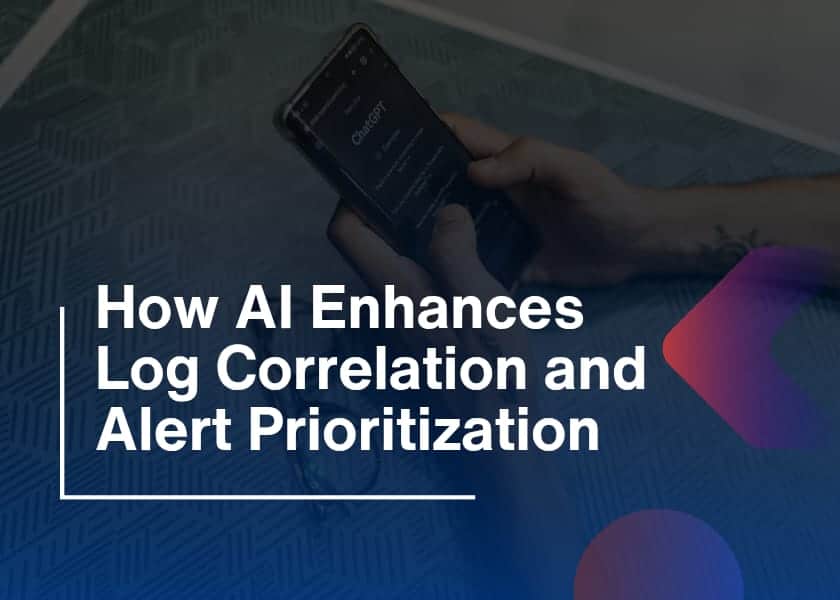Cybersecurity is no longer a luxury; instead, it’s a necessity due to growing digital threats. But when it comes to choosing the right tools, many organizations find themselves stuck between Endpoint Detection and Response (EDR) and Network Detection and Response (NDR). That leads us to a key question: EDR vs NDR, which one does your company truly need, or is a combination of both the smarter move? To answer that, we’ll break down the differences between EDR and NDR, explore their strengths, and help you make a decision based on your unique business needs.
Understanding the Basics of EDR vs NDR
It is important to first understand what EDR vs NDR represents before choosing what’s best for your company. With EDR, IT professionals watch and secure every endpoint, for example, laptops, desktops, and servers. It monitors devices by watching their activities and any suspicious events happening there.
On the other side, Network Detection and Response (NDR) looks at traffic passing through the network and examines all types of network activities. With this method, you can find threats that quickly move from one location in your environment to another, missing your protection at the endpoints. In essence, the main contrast between EDR and NDR is their location of operation. EDR watches the computers and devices, and NDR monitors the whole network.
What is the process EDR uses?
The main job of EDR solutions is to gather data from every endpoint and use algorithms to discover suspicious actions. They send out warnings to security teams and also take care of issues by isolating a device that was attacked or terminating threatening processes. The following are some of the benefits of EDR:
- Current and ongoing activity of every endpoint
- Fast actions to respond to and restrict the incident
- Equipment to look into potential threats
- Using AI and machine learning for analyzing a person’s actions
Still, EDR is not perfect. Unless the endpoint is safely connected to the internet, all efforts might go to waste. Moreover, certain threats traveling through the network can be hard to notice if they do not reach the endpoints.
What Value Does NDR Have?
EDR watches over your devices as NDR monitors all the network traffic. It carries out activities such as deep packet checking, looking for irregularities, and studying patterns to recognize suspicious actions.
There are many advantages to implementing NDR.
- Network-wide visibility
- It’s important to be able to spot sneaky attacks where opponents move around.
- Designed to deal with zero-day attacks as well as APTs
- In addition to firewalls and SIEM tools, it provides protection.
Still, NDR cannot see the activities that occur within each endpoint. Most Network Detection and Response systems can’t spot dormant malware, although they may notice it during network communications.
With this comparison, it is easy to see that all security tools have weaknesses and special benefits.
Use Case Scenarios: EDR vs NDR in Action
Let’s look at some practical examples to better understand how these tools differ.
Scenario 1: A phishing email leads to a malicious download on an employee’s laptop.
Here, an EDR solution shines. It can detect the file, isolate the endpoint, and stop the threat before it spreads.
Scenario 2: A threat actor bypasses endpoint detection and begins lateral movement within the network.
In this case, NDR becomes essential. It can spot unusual behavior across systems, even if the endpoint is compromised silently.
Scenario 3: A sophisticated ransomware attack.
This is where both solutions working together deliver full-spectrum protection—EDR stopping it at the device level, and NDR catching any movement or command-and-control traffic.
Why Choosing One May Not Be Enough
At this point, you’re probably wondering, “Should I choose EDR or NDR?” The truth is, modern threats are increasingly complex and multi-vector. Relying solely on one type of solution could leave critical gaps in your defenses. EDR is ideal for:
- Companies with many remote workers
- Businesses handling sensitive endpoint data
- Environments where BYOD (Bring Your Own Device) is common
NDR is better suited for:
- Enterprises with large, complex networks
- Organizations needing east-west traffic visibility
- Firms with IoT or legacy systems that can’t run EDR agents
Still, given the way attacks unfold today—starting at endpoints and spreading across networks—it makes more sense than ever to consider a combined approach.

The Case for a Combined EDR + NDR Strategy
Cybercriminals don’t think in silos—neither should your security strategy. Integrating both EDR and NDR offers a layered defense that’s much harder to bypass.
Benefits of integrating EDR and NDR:
- End-to-end visibility
- Faster threat detection and remediation
- Improved threat hunting capabilities
- Reduced dwell time for advanced threats
- Better alignment with Zero Trust and XDR models
Moreover, many modern cybersecurity platforms now offer integrations between EDR vs NDR, allowing security teams to correlate data, reduce noise, and focus on true threats.
Evaluating Costs and ROI
Budget is always a factor when making security investments. EDR is often less expensive to deploy, especially in cloud-based environments. NDR solutions tend to have higher costs due to the infrastructure and bandwidth requirements.
However, if your organization suffers a breach due to lacking one or the other, the financial consequences can far exceed the cost of deploying both. Think: ransomware payments, legal fees, regulatory fines, and reputation damage.
Therefore, instead of viewing this as a cost vs. cost decision, think of it as a value vs. risk scenario. Investing in both EDR vs NDR may initially stretch your budget, but it can significantly reduce your long-term risk exposure.
What About XDR?
You might have also come across the term XDR (Extended Detection and Response)—a solution that combines EDR, NDR, SIEM, and more into a single unified platform. If you’re leaning toward implementing both EDR and NDR, XDR might be a more streamlined and cost-effective option.
XDR offers centralized visibility, automated workflows, and deeper analytics—all while reducing alert fatigue for security teams. Still, choosing XDR depends on your team’s maturity and ability to manage integrated tools effectively.
How to Decide What’s Right for Your Business
Here’s a quick checklist to help you determine your best path forward:
Go with EDR if:
- Your main concern is malware or phishing targeting endpoints
- You have a remote or mobile workforce
- Budget is limited, and you need a quick win
Choose NDR if:
- You have legacy devices or IoT that can’t run endpoint agents
- Lateral movement and insider threats are top concerns
- Your network traffic is complex and decentralized
Opt for Both if:
- You need full-spectrum visibility and protection
- You operate in a highly regulated industry (e.g., finance, healthcare)
- You’re building a Zero Trust architecture or planning for XDR
Regardless of which you choose, be sure to integrate your solution with your existing tools like SIEM, firewalls, and threat intelligence platforms.
Final Thoughts
In the battle of EDR vs NDR, it’s not always about picking one over the other. It’s about building a comprehensive security posture that fits your business’s size, industry, and risk level. With cyberattacks becoming more advanced and harder to detect, investing in both EDR and NDR gives your team the power to spot threats early, respond faster, and protect your assets with greater confidence.
After all, it’s not just about detection, it’s about survival in the digital age. So, why choose one when you can have the best of both?





